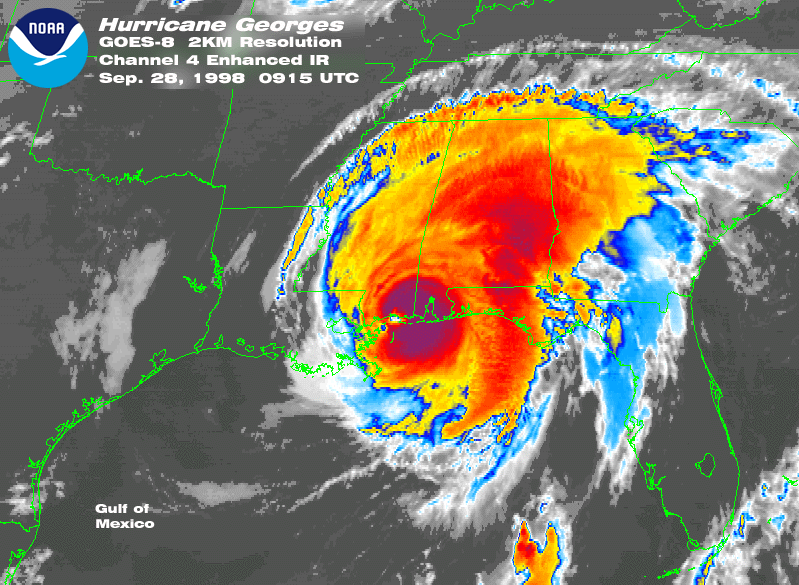
The issue: With the rising seas lashing America’s coasts, how residents react is a growing area of interest. Man-made global warming threatens to inundate coastal areas of the United States, home to 40 percent of the country’s population. Local and federal governments say they need billions of dollars to prepare critical infrastructure, such as drainage pipes and roads.
Reporters covering hurricanes often describe damage and the rebuilding process. Yet slow demographic and population changes also impact long-term policy and government spending.
How do people living in these areas assess their options? A new paper looks at the Gulf Coast across 35 years.
An academic study worth reading: “Trapped in Place? Segmented Resilience to Hurricanes in the Gulf Coast, 1970–2005,” published in Demography, August 2016.
Study summary: This study, led by John Logan of Brown University, looks at which residents affected by hurricanes in the southern United States are likelier to move during the three years following a major hurricane. The authors ask whether some demographic groups are more “resilient” than others — meaning they are either able to stay behind after a devastating storm and thrive, or have the means to uproot and plant themselves elsewhere. Logan and his colleagues call this movement “segmented withdrawal.”
The authors use National Oceanic and Atmospheric Administration (NOAA) data to estimate damage from all hurricanes to hit the Gulf Coast between 1970 and 2005 — both major wind damage and flooding from storm surges. With census data, they look at 476 counties within 200 miles of the coast in Alabama, Georgia, Louisiana, Mississippi, Texas and the Florida panhandle — areas that were home to over 26 million people in 2005.
They compare two risk factors: proximity to coast (“locational vulnerability”) and capacity to deal with disaster (“social vulnerability”). Often it is “minorities, elders, and low-income groups,” the authors hypothesize, who are most hazard-prone and least able to move. After Katrina hit New Orleans in 2005, for example, the poorest were less able to evacuate because of a lack of transportation.
Though this paper does not specifically address global warming, rising seas are deluging the same coastal communities affected by hurricanes.
Findings:
- White people are more likely than black people to leave when their communities face major damage from flooding and high winds. The damage leads to a reduction of the black population over three years by 0.5 percent; of the white population by 1.1 percent — twice as much. This outflow continues for three years after a storm.
- Overall, major hurricane damage and storm surge reduces a county’s population by about 1 percent over the three-year period, with departures continuing into the third year after a storm.
- The elderly are less likely to move from high-risk areas than young people. Over three years, after a storm causing substantial wind damage and flooding, there is a 1.6 percent decline in a county’s young population, but only a 0.4 percent decline in its elderly population. “Our view is not that the elderly are more resilient, but that they are more vulnerable: they are more rooted in place and have more difficulty arranging a move.”
- The poor are less likely to leave. In the first year after a destructive hurricane, there was a 0.8 percent population decline in a county with low rates of poverty. By contrast, the authors found a 0.12 percent population increase in a high-poverty county. Over three years, low-poverty counties saw a 2.04 percent population decline while high-poverty counties saw a 0.44 percent population increase. The authors suggest future research may explain these tendencies.
- These poverty findings cut across race: “Both blacks and whites appear to be more likely to remain in place after hurricanes in poorer counties but to leave more affluent counties.”
- Poorer communities bear the brunt of both damage and woe after a storm because they are less likely to have insurance, have less access to decision makers, and are more likely to live in poorly constructed (“most subject to damage”) homes. “People who remain [during or after a hurricane] in the face of risk may simply be trapped in place.”
- There were no signs that departures from one county boosted the population of a neighboring county — i.e. no signs that neighboring counties take in the displaced.
- In the 1950s, wealthier people and white residents tended to live in higher-risk areas closer to the coast; the areas were considered more desirable because of their proximity to water. But a shift occurred. By 2000, blacks “became more exposed” to these risks than whites. And by 2010, the wealthier were less likely to live in high-risk areas than the poor were.
- Overall, despite the population reductions described here, the Gulf region as a whole saw 80 percent population growth over the period studied.
Other resources:
The National Oceanic and Atmospheric Administration (NOAA), a U.S. government agency, has extensive data on weather and global warming in general, as well as more specific tools like maps that visualize coastal flooding related to rising seas.
A list of other government data sources is available here.
The federal government’s subsidized flood insurance program encourages residents to rebuild in areas hit by hurricanes. Over the years, the program has spent tens of billions of taxpayer dollars, often in areas sure to be hit again in the future. The New York Times reported in 2012 on how the program has helped Dauphin Island in Alabama, one of the nation’s most vulnerable areas, rebuild over and over.
Journalist’s Resource has a tip sheet on covering hurricanes that includes lists of resources available in emergencies.
Other research:
A research roundup by Journalist’s Resource focuses on global warming’s impact on coastal American cities.
We have also profiled research on flood trends, crime and access to credit following natural disasters and recovery after major storms like Hurricane Sandy.
Keywords: weather, storms, moving, preparedness, oceans, sea level rise, disaster, migration, Hurricane Katrina, Gilbert, Elena, Allen, Andrew, Ivan
